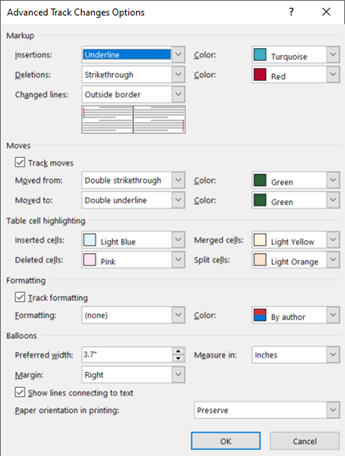
Just click the button at the right and select the range of cells you want to keep track of.įinally, you can un-check the Highlight changes on screen option if you do not want others to know you are tracking changes. The Where option allows you to track changes only for a specific portion of the spreadsheet. If you check Who, you can choose to track changes made by anyone or changes made by everyone except you. You also have the option of highlighting changes from the last time you saved the document, since a specific date, or changes that have not yet been reviewed. For When, All means every change will be highlighted. You have several options here including When, Who, and Where. You’ll get a dialog box where you now need to check off the option “Track changes while editing. At the far right, you should see an option called Track Changes under the Changes section.Ĭlick the button and choose Highlight Changes. Open Excel and click on the Review tab on the ribbon. Let’s go ahead and turn on tracking first.
OPEN OFFICE TRACK CHANGES COLOR HOW TO
Now that you know some basics of how tracking works in Excel, let’s talk about how to enable it, change settings and keep track of changes! Enabling Tracking This means that multiple users will be making changes to the document. Whenever your turn on tracking, the workbook becomes a shared workbook. That means the next time you open it, you won’t be able to see that change you had made 45 days earlier.Ĥ. When you close it, any change history older than 30 days will be gone. If you make changes to an Excel worksheet and then open the workbook again 45 days later, then you’ll be able to see the change history for all 45 days until you close the workbook. Change history is only kept for 30 days by default.

Other changes that are not tracked include hiding/unhiding rows and columns, comments, and cell values that change to due a formula recalculation.ģ. Any data stored in a cell is tracked, but other changes like formatting are not. Turning on tracking doesn’t mean every single change you make will be recorded. If a higher value is found during the search in the column, the number of the previous row is returned.2. As soon as this value is reached, the number of the row in which it was found is returned. =MATCH(200 D1:D100) searches the area D1:D100, which is sorted by column D, for the value 200. You can switch the automatic evaluation of regular expression on and off in - LibreOffice Calc - Calculate. If you want to search for a text that is also a regular expression, you must precede every character with a "\" character. You can enter "all.*", for example to find the first location of "all" followed by any characters. For Type = -1, the index of the first value that is larger than or equal is returned. This applies even when the search array is not sorted. If Type = 1 or the third parameter is omitted, the index of the last value that is smaller than or equal to the search criterion is returned. Only if Type = 0 can you search for regular expressions (if enabled in calculation options) or wildcards (if enabled in calculation options). If the search criterion is found more than once, the function returns the index of the first matching value. If Type = 0, only exact matches are found. This corresponds to the same function in Microsoft Excel.

If Type = -1 it is assumed that the column is sorted in descending order. If Type = 1 or if this optional parameter is omitted, it is assumed that the first column of the search array is sorted in ascending order. A lookup array can be a single row or column, or part of a single row or column. SearchCriterion is the value which is to be searched for in the single-row or single-column array. Ten concepts that every Calc user should know You can select the green checkmark icon at the same time. If this solved your problem please go to your first post use the Edit button and add to the start of the title. Explain precisely how one can tell that "Player 1 missing that track", "all players have the track", and "Track 1 is already played".

Then, if you're unable to find a solution yourself, attach a document demonstrating the situation (remove confidential information then use Post Reply, not Quick Reply, and don't attach a picture instead of the document itself). If you're fairly new to Calc, you should read the tutorial below. You will need two conditions, one for red and one for blue. Read about this feature in Help → Index or in User Guides (PDF) or searching for topics about it in the Calc Forum. Is there a way to automatically do this?Use Format → Conditional Formatting. and if Track 1 is already played I want it to be blue. If Track 1 has all players that have the track I want it to remain white. SmileyJ wrote:So for example if Track 1 has Player 1 missing that track, then I want the Track 1 background color to be Red.


 0 kommentar(er)
0 kommentar(er)
